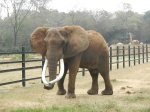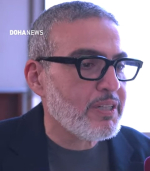Media
-
 Prince Harry to testify in High Court privacy battle against Daily Mail publisher
Prince Harry is set to return to a London courtroom next week, where he will personally give evidence in a high-profile privacy lawsuit against the publisher of the 'Daily Mail', marking another15 January 2026Read More...
Prince Harry to testify in High Court privacy battle against Daily Mail publisher
Prince Harry is set to return to a London courtroom next week, where he will personally give evidence in a high-profile privacy lawsuit against the publisher of the 'Daily Mail', marking another15 January 2026Read More... -
 UK government turns to TikTok to publicise immigration raids amid voter backlash
The British government has taken its immigration message to TikTok, launching an official account that showcases raids on people accused of working illegally. The move is aimed at sending a14 January 2026Read More...
UK government turns to TikTok to publicise immigration raids amid voter backlash
The British government has taken its immigration message to TikTok, launching an official account that showcases raids on people accused of working illegally. The move is aimed at sending a14 January 2026Read More... -
 Keir Starmer threatens action against Elon Musk over AI ‘Deepfake’ abuse on X
Prime Minister Keir Starmer has issued a stark warning to Elon Musk, urging the tech billionaire to rein in his AI chatbot Grok after it was reportedly used to create sexualized images of women13 January 2026Read More...
Keir Starmer threatens action against Elon Musk over AI ‘Deepfake’ abuse on X
Prime Minister Keir Starmer has issued a stark warning to Elon Musk, urging the tech billionaire to rein in his AI chatbot Grok after it was reportedly used to create sexualized images of women13 January 2026Read More... -
 BBC moves to dismiss Donald Trump’s $5bn defamation lawsuit over January 6 documentary
The BBC is preparing to ask a US court to throw out Donald Trump’s $5bn (£3.7bn) defamation lawsuit, arguing that the case has no legal footing and should not be13 January 2026Read More...
BBC moves to dismiss Donald Trump’s $5bn defamation lawsuit over January 6 documentary
The BBC is preparing to ask a US court to throw out Donald Trump’s $5bn (£3.7bn) defamation lawsuit, arguing that the case has no legal footing and should not be13 January 2026Read More... -
 Meta blocks 550,000 social media accounts as Australia enforces world’s toughest youth ban
Meta has blocked more than half a million social media accounts in the opening days of Australia’s sweeping new law banning children under 16 from using major12 January 2026Read More...
Meta blocks 550,000 social media accounts as Australia enforces world’s toughest youth ban
Meta has blocked more than half a million social media accounts in the opening days of Australia’s sweeping new law banning children under 16 from using major12 January 2026Read More...

Culture
-
 In Bloom: How plants shaped Britain and the modern world
Plants surround us every day – in our gardens, our homes and even in our cups of tea – yet few of us stop to consider the extraordinary journeys they have taken to get here.Read More...
In Bloom: How plants shaped Britain and the modern world
Plants surround us every day – in our gardens, our homes and even in our cups of tea – yet few of us stop to consider the extraordinary journeys they have taken to get here.Read More... -
 UK launches first town of culture competition to revive local pride and boost economic growth
The government has officially launched the UK’s first-ever Town of Culture competition, marking a major new push to restore pride in communities and drive cultural-led economic growthRead More...
UK launches first town of culture competition to revive local pride and boost economic growth
The government has officially launched the UK’s first-ever Town of Culture competition, marking a major new push to restore pride in communities and drive cultural-led economic growthRead More... -
 Government announces academy trust inspections to strengthen school accountability
New academy trust inspections to boost transparency for parents and strengthen outcomes for childrenRead More...
Government announces academy trust inspections to strengthen school accountability
New academy trust inspections to boost transparency for parents and strengthen outcomes for childrenRead More... -
 Cumbrian animated flood film scoops international science award
A short animated film featuring a red squirrel from Cumbria has won an international education award, shining a global spotlight on how trees can help tackle floodingRead More...
Cumbrian animated flood film scoops international science award
A short animated film featuring a red squirrel from Cumbria has won an international education award, shining a global spotlight on how trees can help tackle floodingRead More... -
 Inside an immersive Guildhall Art Gallery exhibition inspired by the London Tube
The sensory world of the London Tube is brought vividly to life in a new immersive exhibition at Guildhall Art Gallery, uniting painter Jock McFadyen RA with musicianRead More...
Inside an immersive Guildhall Art Gallery exhibition inspired by the London Tube
The sensory world of the London Tube is brought vividly to life in a new immersive exhibition at Guildhall Art Gallery, uniting painter Jock McFadyen RA with musicianRead More... -
 Researchers uncover ‘lost geometric code’ embedded in Oxford and Britain’s historic buildings
Researchers say they have uncovered a long-forgotten geometric code woven into some of Britain’s most famous historic buildings, including landmarks in Oxford.Read More...
Researchers uncover ‘lost geometric code’ embedded in Oxford and Britain’s historic buildings
Researchers say they have uncovered a long-forgotten geometric code woven into some of Britain’s most famous historic buildings, including landmarks in Oxford.Read More... -
 IWM Duxford to open new Second World War rooms revealing unseen artefacts and daily life of wartime pilots
IWM Duxford is set to open three newly restored Second World War spaces, offering visitors an intimate look at the lives of aircrew stationed at the Cambridgeshire airfield during the conflict.Read More...
IWM Duxford to open new Second World War rooms revealing unseen artefacts and daily life of wartime pilots
IWM Duxford is set to open three newly restored Second World War spaces, offering visitors an intimate look at the lives of aircrew stationed at the Cambridgeshire airfield during the conflict.Read More... -
 War-torn Trafalgar Union Flag faces possible departure from UK
A rare Union Flag that led the British charge at the Battle of Trafalgar has been placed under an export bar, giving UK institutions the chance to keep the historic relic in the country.Read More...
War-torn Trafalgar Union Flag faces possible departure from UK
A rare Union Flag that led the British charge at the Battle of Trafalgar has been placed under an export bar, giving UK institutions the chance to keep the historic relic in the country.Read More... -
 Barbican to host Liam Young’s first UK solo exhibition in 2026
The Barbican has announced ‘In Other Worlds’, the first UK solo exhibition by artist, director and BAFTA-nominated producer Liam Young. Opening May 2026, the immersive show will exploreRead More...
Barbican to host Liam Young’s first UK solo exhibition in 2026
The Barbican has announced ‘In Other Worlds’, the first UK solo exhibition by artist, director and BAFTA-nominated producer Liam Young. Opening May 2026, the immersive show will exploreRead More... -
 The Manchester Museum displays thousands of African artefacts it knows little about
A museum in northwest England has unveiled a new gallery showcasing thousands of African artefacts, many of which the institution admits it knows very little about. The exhibition aims toRead More...
The Manchester Museum displays thousands of African artefacts it knows little about
A museum in northwest England has unveiled a new gallery showcasing thousands of African artefacts, many of which the institution admits it knows very little about. The exhibition aims toRead More... -
 Captain John Narbrough’s journal faces export ban amid fears it could leave the UK
A rare 17th-century manuscript journal documenting Captain John Narbrough’s secret expedition to Spanish America and the Pacific has been placed under a temporary export ban, giving UKRead More...
Captain John Narbrough’s journal faces export ban amid fears it could leave the UK
A rare 17th-century manuscript journal documenting Captain John Narbrough’s secret expedition to Spanish America and the Pacific has been placed under a temporary export ban, giving UKRead More... -
 Earliest evidence of human fire-making unearthed in Suffolk
A team led by the British Museum has uncovered what is now the earliest known evidence of humans deliberately making fire—dating back around 400,000 years—at a site in Barnham,Read More...
Earliest evidence of human fire-making unearthed in Suffolk
A team led by the British Museum has uncovered what is now the earliest known evidence of humans deliberately making fire—dating back around 400,000 years—at a site in Barnham,Read More... -
 Rothschild 15th-century prayer book set to fetch up to $7 million at Sotheby’s auction
Ultra-rare 15th-century mahzor features vivid medieval illustrationsRead More...
Rothschild 15th-century prayer book set to fetch up to $7 million at Sotheby’s auction
Ultra-rare 15th-century mahzor features vivid medieval illustrationsRead More...

British Queen celebrates
Most Read
- Teen held after US woman killed in London stabbings
- Heave-ho Harry! Prince prepares to join the walking wounded in ice trek to North Pole
- Football: Farhad Moshiri adamant Everton deal above board
- "Master of English Style". Interview with Designer Lydia Dart
- Letter to the Financial Times from Lord Mayor Alderman Michael Bear
Education

In a public letter addressed to Prime Minister Rishi Sunak, five teenage girls, ranging in age from 13 to 15, have urged him to maintain single-sex restroom facilities in

Over 4,300 Jewish children attending state-funded primary schools across London are set to benefit from free kosher meals as the new school term commences, according to

The Mayor of London, Sadiq Khan, said: “I would like to congratulate every young Londoner who is receiving their GCSE results today. This is a proud day for students, their

The cohort includes one Malaysian who received a Chevening Fellowship to complete a short course at the Oxford Centre of Islamic Students.

The UK Secretary of State for Levelling Up, Housing, and Communities, Michael Gove, recently visited the Jewish Learning Exchange (JLE) hub in Golders Green. During his

Around 12,000 young people in some of the most disadvantaged areas of the country will benefit from a wave of new free schools, another major step in this government’s work to raise school

Amutri, a specialized startup from Falmouth University, has secured a substantial grant of £492,000 from Innovate UK.

Amidst a return to pre-pandemic marking standards, Jewish schools are emerging as beacons of success, bucking the trend of A-level grade deflation across the nation. These schools are

UK Prime Minister Rishi Sunak participated in the recitation of the Indian epic 'Ramayan,' led by spiritual leader Morari Bapu at an event held at Cambridge University on

The UK High Commission in Ottawa and Canada-based British entrepreneur and philanthropist David Briggs have announced that they have joined forces to create the





















